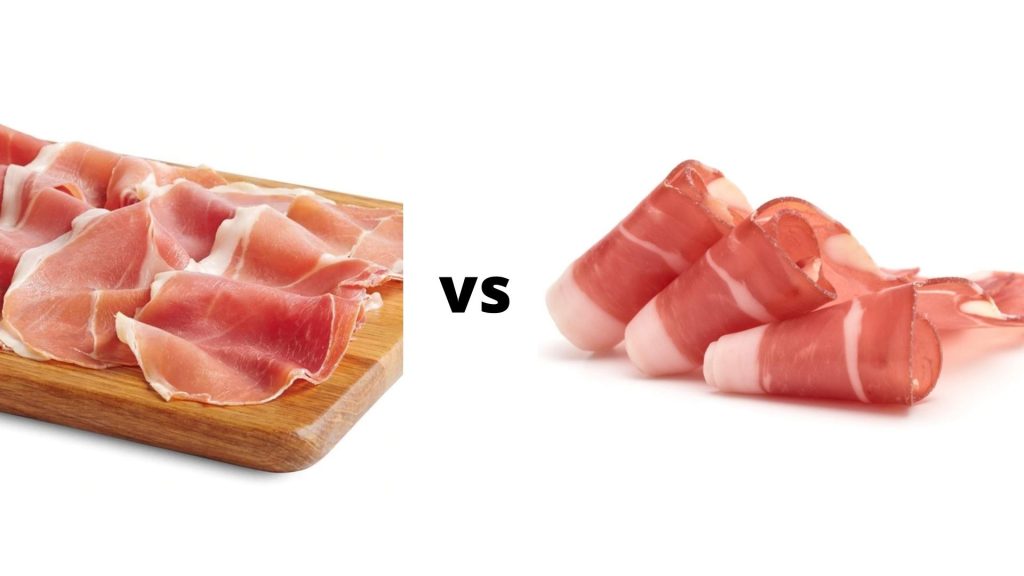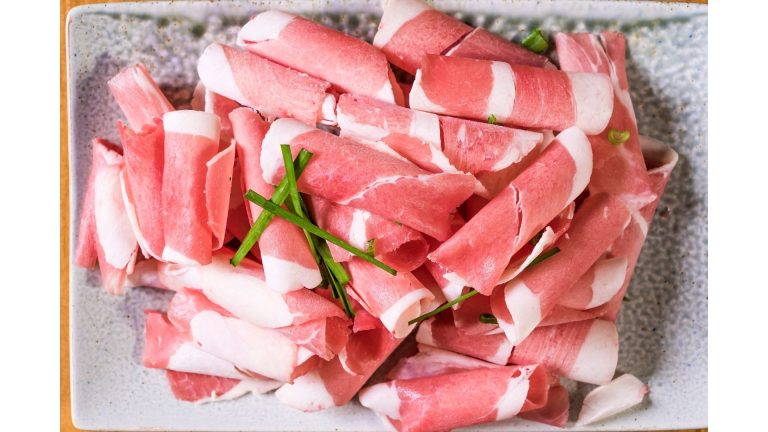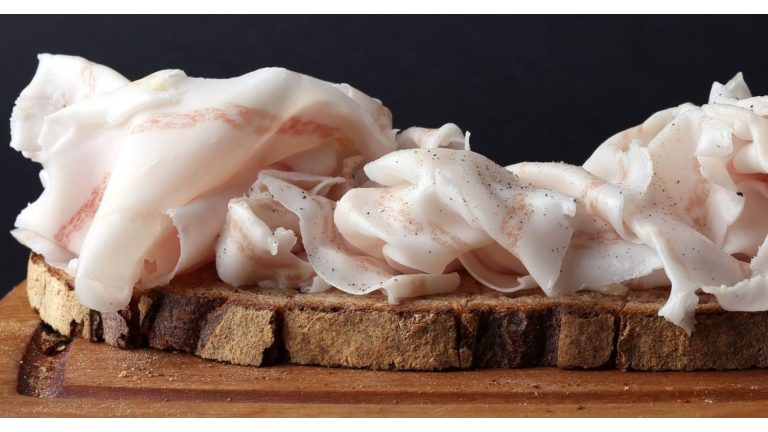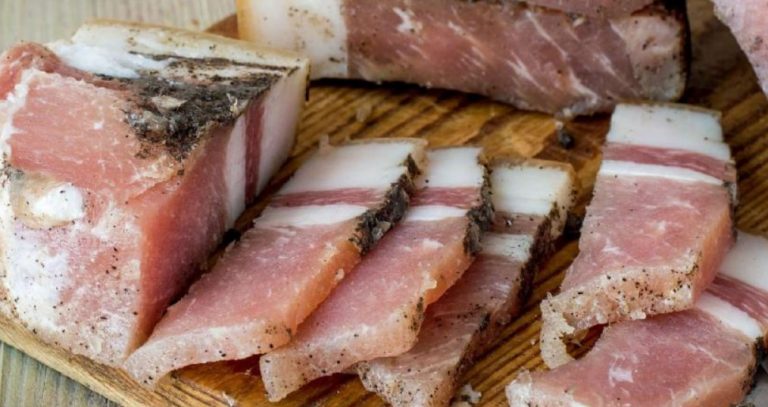Serrano Ham vs. Prosciutto: Similarities and Differences
Serrano ham is a pork leg that’s been smoked over wood chips, then air-dried for 30 days or more. The result is a thick, meaty cut that has a strong smoky flavor.
Serrano ham is usually aged for at least 12 months and it is cured using a dry method (no smoking or salt).
Prosciutto is dry-salted and smoke-dried, resulting in a milder flavor. Serrano ham is usually served hot, prosciutto is often sliced and used as an appetizer or in salads.
Prosciutto is dry-cured pork leg that’s typically air-dried for 3 months. The resulting prosciutto is lean and delicious.
The Serrano ham is considered to be one of the finest hams in the world.
People living outside of Spain and Italy may be confused by the prosciutto debate. Dry-cured pork leg is the type of meat that is used.
The differences between these two types of meat are not limited to their place of origin. They are made using different curing techniques and each one has a different taste.
In this article, I will explain to you the difference and similarities between Serrano Ham and Prosciutto.
Table of Contents
What Is Serrano Ham?
Many people don’t know what serrano ham is because they’ve never heard of it. Many people don’t even realize that there is more than one kind of ham available.
Serrano ham is Spanish ham produced from pigs raised in the Sierra Nevada region of Spain. Like many other hams, it has been cured for up to three years.
But it’s different than most other kinds of cured pork products because it’s made from a single breed of pig.
Jamon Serrano’s production isn’t limited to a single geographical area.
It is made across the entire country, and each region has slightly different preparation guidelines that lead to different flavor undertones.
Dry-cured ham is called Jamon Serrano. In the past, only indigenous Ibérico pigs were used to prepare Jamn Ibérico.
Spanish artisans started using Duroc or Landrace pigs as they reproduce quickly and are used to modern farming practices.
Many years ago, Spanish artisans used the power of Mother Nature to make Serrano ham. The nature of the change of seasons made it possible to preserve the meat.
It was prepared in the mountains where the climate changed from cold and moist in the winter to hot and dry in the summer.
The gradual aging and preservation of the meat were made possible by this.
Jamon Serrano can be made in curing sheds in Spanish mountains as well as in large factories across the country. Three steps are required in the preparation.
Salting
The fresh meat from the pig is rubbed with salt and placed in a cold, humid room for 20 hours to two days. This makes it possible for the salt to absorb.
Post-salting
It is necessary to rinse the first layer of salt to remove any bacteria and water.
Dry curing
Modern technology makes it possible for meat to be hung in special cellars that mimic the change of the seasons.
Cold and humid conditions are replaced by dry and hot ones in the cellar.
The process of preserving ham, melting the fat, and giving the cured meat a unique flavor is what this process is about.
The Consorcio del Jamn Serrano Espaol strictly observes the quality standard of Serrano ham, which can be produced in any Spanish region.
The ham should pass the following tests:
- Must be produced in Spain
- Must be dry-cured for an average of up to 12 months
- Have a minimum fat cover of about 1 cm.
- Must have at least a 34% decrease from its original weight.
- Each Spanish ham should pass flavor and appearance inspection.
- Quality audits that are periodically performed by the Consorcio need to be produced by firms that pass them.
What Is Prosciutto?
Prosciutto is a highly prized Italian salumi or dry-cured ham, made from pork from the Parma area.
It is a popular specialty of the Emilia Romagna region of Italy, particularly in northern Italy where it is sold at many delis and restaurants.
Traditionally, prosciutto is made with fresh pork belly but is sometimes also made with beef, or with a mix of pork belly and beef.
Prosciutto is similar to deli ham in that it is both raw and cooked. Whole legs, thin raw slices, and cooked sandwich slices are just some of the forms it comes in.
In this article, I will talk about classic prosciutto crudo.
The production involves the following steps:
- The pig leg needs to be rubbed with salt.
- The meat should be left to rest for a week or a few weeks. Excess water and blood can be absorbed by salt during this time. This prevents the bacteria from entering the meat.
- Now the meat is washed and the second layer of salt is applied. Often, herbs such as thyme and garlic can be used along with salt.
- The meat is left in a cool and dry room for up to 14-36 months. During this time, the meat acquires its unique flavor.
Depending on the region the preparation process may change. In Prosciutto di Parma, the only ingredients are salt and ham.
It is usually cured for a long time. The Consorzio del Prosciutto di Parma has a Ducal Crown mark that can be seen on the inside of Prosciutto.
Prosciutto di San Daniele, prosciutto di Modena, and prosciutto di Toscana hold a quality mark and must be made within a specific region.
Differences and Similarities Between Prosciutto and Serrano Ham

Similarities
Serrano ham is made from white pigs, while prosciutto is dry-cured. If thinly sliced, both types of meat have a salty flavor that will melt in the mouth.
Serrano ham and prosciutto can be safely eaten raw, as the curing process naturally preserves meat, which is why they are perfect for charcuterie boards, pasta dishes, or as a side for wine.
It is not uncommon to substitute one for the other when cooking. Serrano ham and prosciutto di Parma must both come with a quality mark, but this doesn’t apply to other types of prosciutto.
Differences
Prosciutto and Serrano ham seem to be the same, but they have more differences than similarities.
Prosciutto can be made anywhere in the world as long as the preparation process is correct, whereas Serrano ham can only be made in Spain.
This does not apply to Parma, San Daniele, Modena, and Toscana ham that has to be made in the Parma region.
Serrano ham is always raw, whereas prosciutto comes in both cooked and raw forms. The Serrano ham has a bigger difference in its composition.
The process of preparing for a debate is called the prosciutto debate. In the past, Prosciutto was aged in cellars and cured in cool and dry places.
Serrano ham is aged in different environmental conditions, changing from cool and humid to hot and dry. There are slightly different flavors as a result of this.
Serrano ham is more intense and dry than Prosciutto, which is sweeter and moister. It is also softer and pinker than prosciutto.
Serrano Ham vs. Prosciutto
| Serrano Ham | Prosciutto | |
| Animal Source | Pig (pork) | Pig (pork) |
| Produced In (Region) | In any Spanish region. Can’t be produced out of Spain. | Anywhere, apart from the varieties that are exclusive to the Parma, Toscana, San Daniele, and Modena regions. |
| Quality Mark | S-shaped, which was issued by the Consorcio del Jamón Serrano Español. | None, some varieties are exclusive to certain regions. |
| Raw or Cooked | Only available raw. | Is available both raw and cooked. |
| Curing Process | Is cured by using the changes in environmental conditions – from hot and dry to cool and moist. | Is cured in a cool and dry place. |
| Curing Duration | 12 months on average | 14-36 months |
| Taste | Intense and salty | Sweet and salty |
| Texture | It is drier but melts in the mouth if it is thinly sliced. | Very soft and slightly moist. Melts in the mouth, especially when it is thinly sliced. |
| Color | Dark pink or brownish | Pink |
| Additional Ingredients | Salt | Herbs are optional |
Conclusion
Hopefully, this article will help you understand the similarities and differences between Serrano ham and prosciutto.
If you haven’t tried Serrano ham yet, I suggest you try it out to see which one you prefer.
These dry-cured delicacies are heavenly on top of bread or pasta and can be added to wine or champagne.

Foodie and a passionate cook, I am here to share all of what I know about cooking, kitchen, and food prepping.
Follow me for delicious and healthy recipes.




